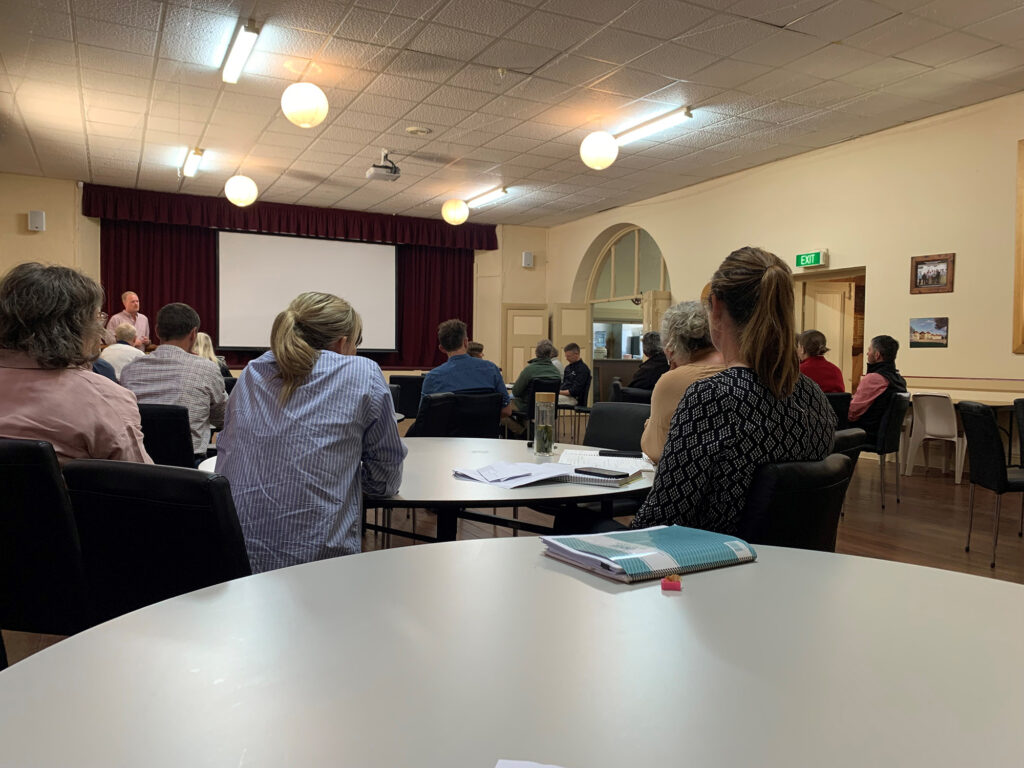Vinehealth Australia was recently invited by the Limestone Coast Grape and Wine Council to provide an update at their technical workshop on 7 February in the Coonawarra Hall, on our activities. This update was a great opportunity to talk about eight topics with the 23 attendees and share a range of our biosecurity materials.
Vinehealth’s Technical Manager Suzanne McLoughlin provided the following updates:
- Fruit fly: the current fruit fly situation in the Riverland; Vinehealth’s role in these outbreaks; where industry can obtain up-to-date information; and movement requirements for vineyards and wineries around sending winegrapes into the Riverland Pest Free Area from greater South Australia, and out of the fruit fly affected area into greater South Australia.
- Grapevine red blotch virus: Vinehealth’s plans for autumn sampling in vineyards of interest in South Australia; new PhD research underway; strong collaboration between diagnostic laboratories in working on enhanced reliability of laboratory detection methods; and what you should do in terms of monitoring for symptoms in late summer/autumn and reporting any suspect presence to the AWRI Help Desk on 8313 660, or to Vinehealth Australia on 0412 859 882 or 0418 818 543.
- Naracoorte Heat Shed upgrade: advice of completion of installation of upgraded control system software, improving reliability and functionality for both users and Heat Shed Manager Sarah Bird; imminent installation of new temperature probes and wiring; and new SMS functionality which will advise users remotely of treatment completion.
- Prescribed burns: Vinehealth’s conduit role during the autumn prescribed burns season in the Adelaide and Mount Lofty Ranges Region between growers, Adelaide Hills Wine Region and National Parks and Wildlife Service; our current communications to growers pre-season and during vintage; and how these communications are expected to improve for all parties in the advent of an upgraded Register and increased technology capability.
- Phylloxera surveillance: Vinehealth’s desire to implement a phylloxera surveillance program in South Australia based on risk, and incorporating multiple phylloxera detection methods (known to vary in cost, speed, sensitivity, accuracy and expertise required).
- Register: reminder of Vinehealth’s mandate to collect foundation data from SA vineyard owners who have 0.5 hectares or more of planted vines according to the Phylloxera & Grape Industry Act 1995; what data is collected; how it is maintained, including as part of the property sale process; and progress towards the build of an improved Register.
- Funding review: recent closure of industry consultation; analysis of deidentified feedback underway, including preparation of consultation feedback summary for industry; sharing of feedback with SAWIA, WGCSA and SAVIA and the Minister.
- Pre-vintage biosecurity: summary of key themes to consider around understanding what you’re trying to keep out, how pests can be introduced and spread, and your mitigation choices. This included reminders that you can never manage biosecurity risk to nil; everyone’s perception of biosecurity risk will vary; with our very connected industry, everyone in the supply chain has a role to play in managing biosecurity; and just because you can undertake certain imports into South Australia, always consider whether you should conduct those movements.
